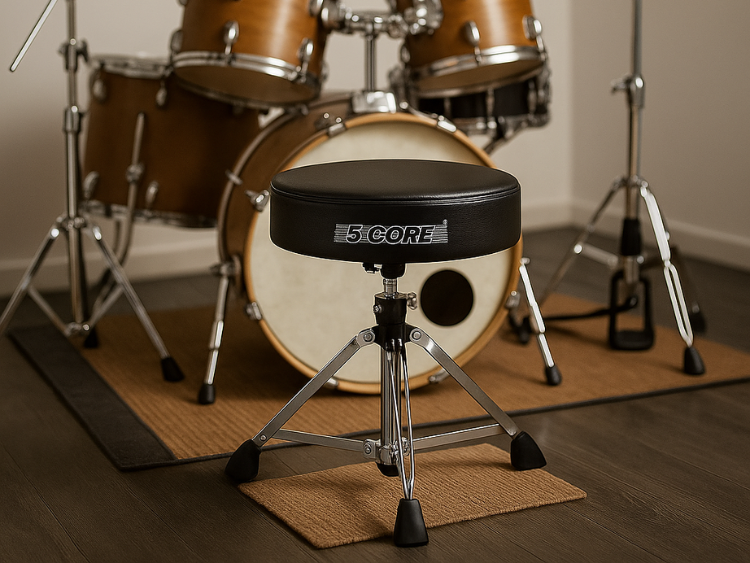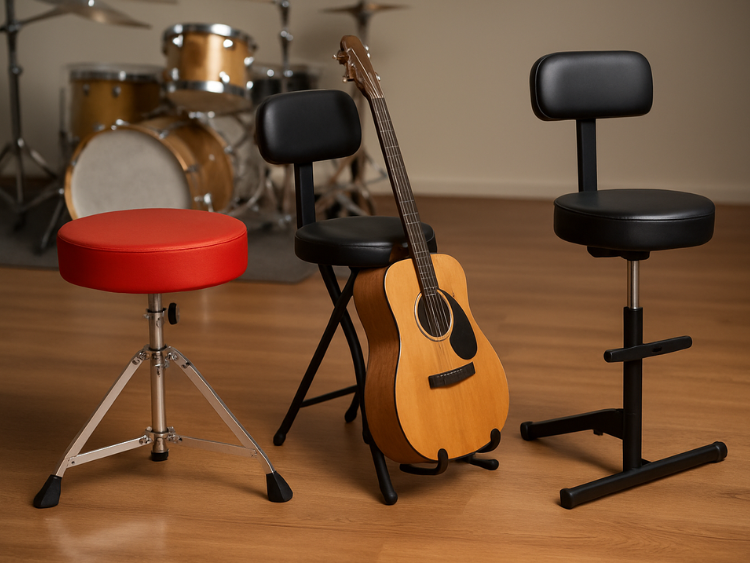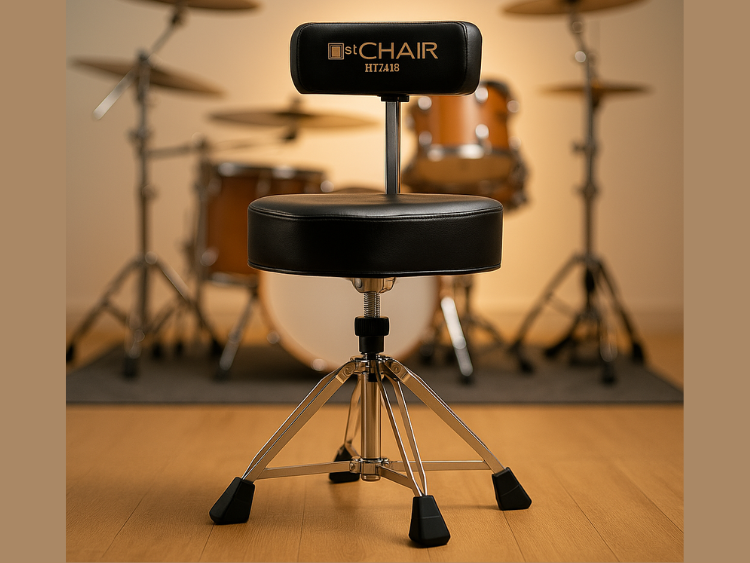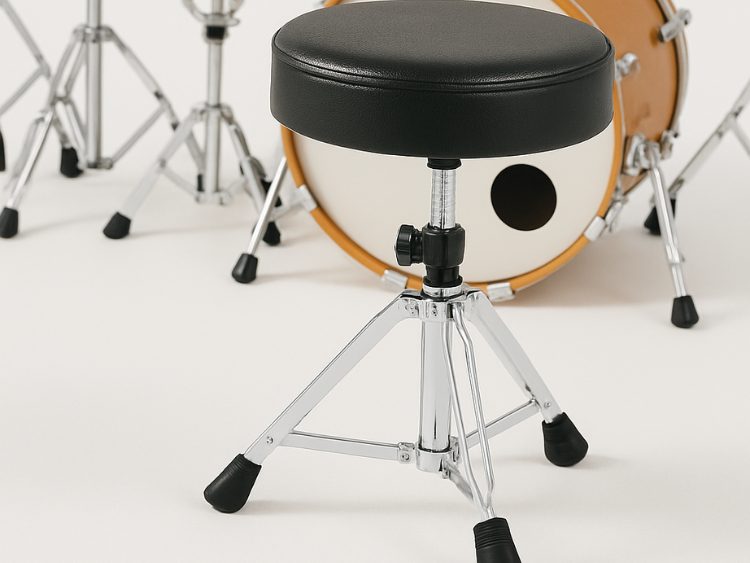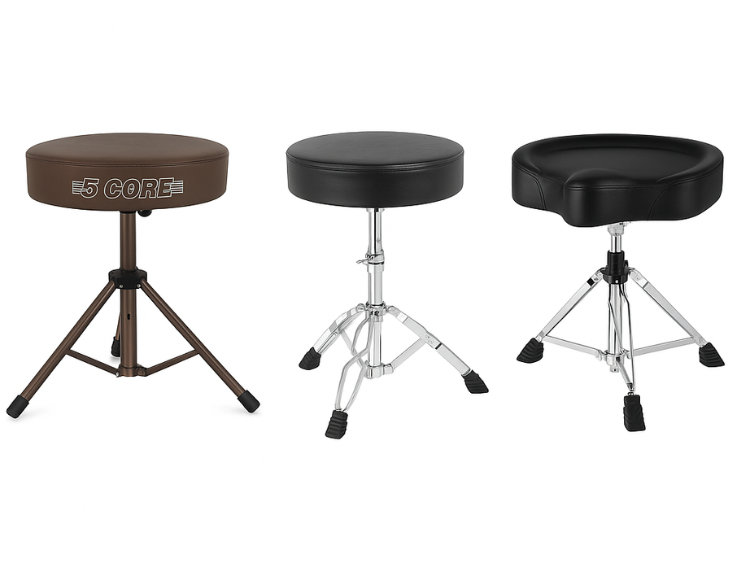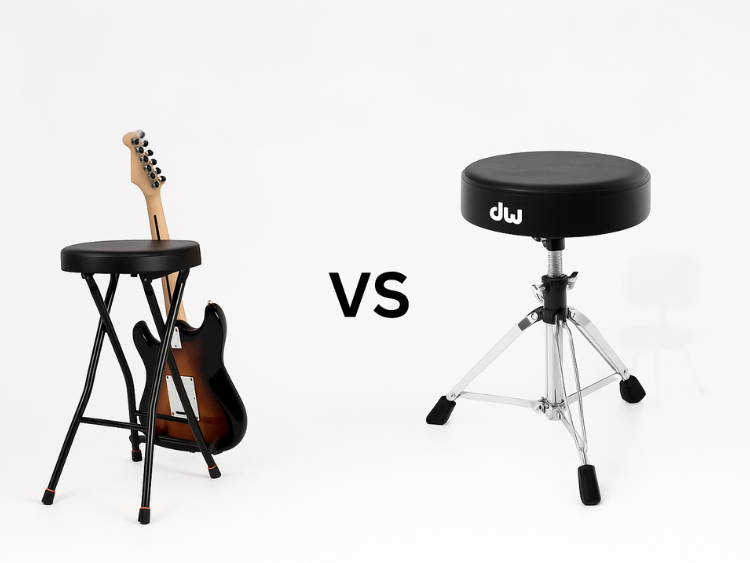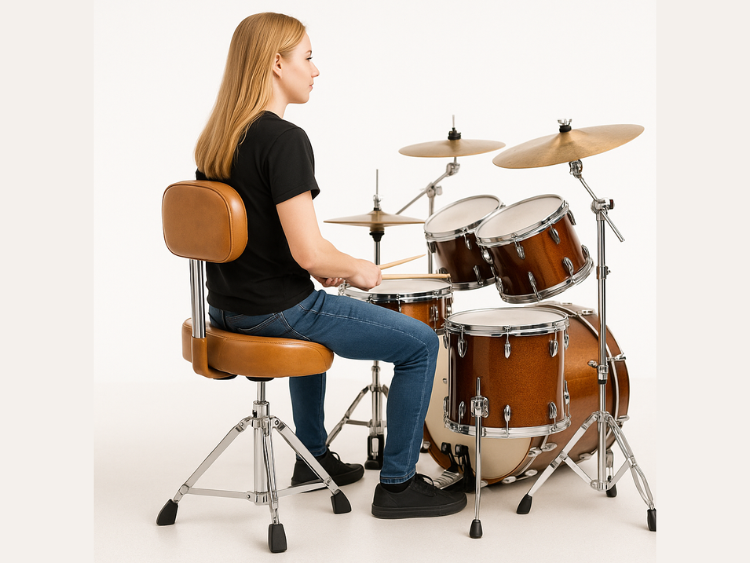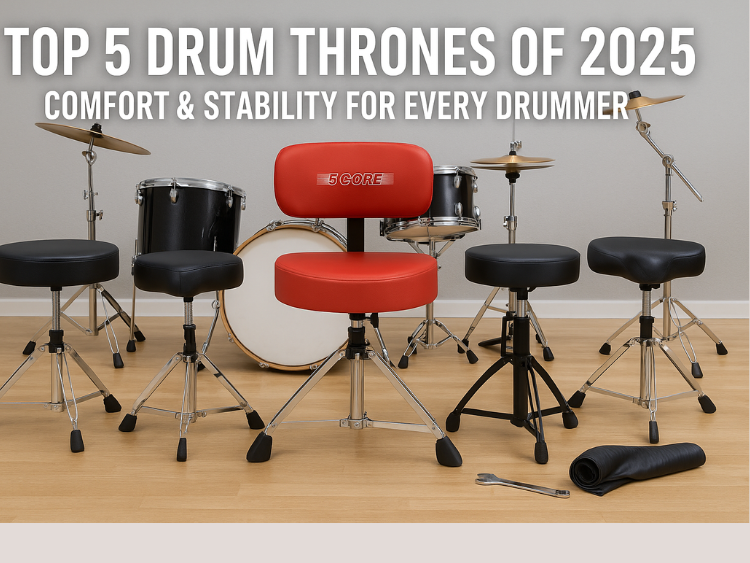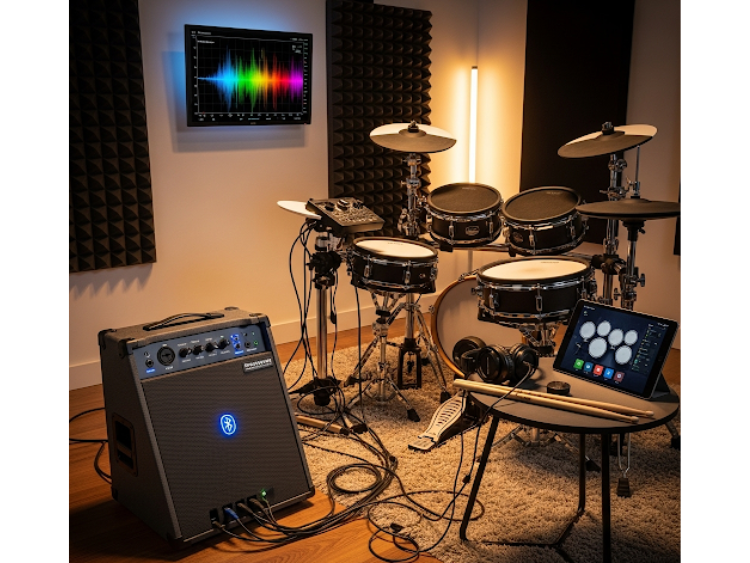Top 2025 Drum Accessories for Home Studio Recording
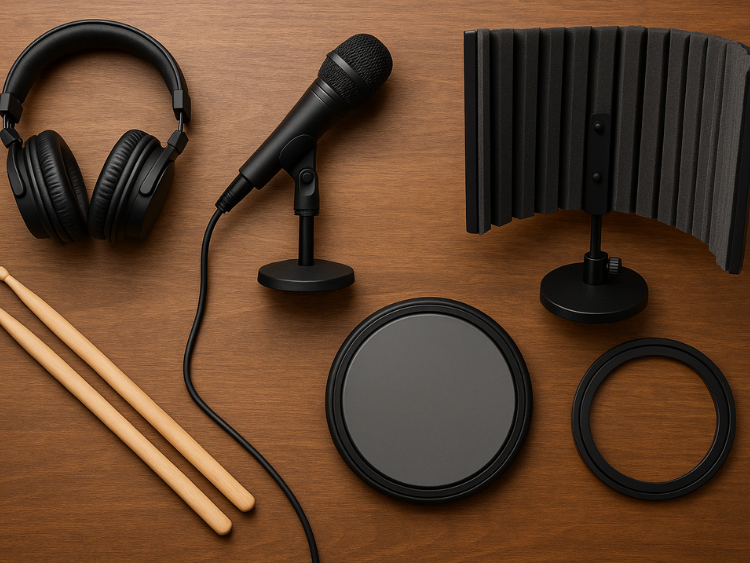
Great drum recordings don’t just come from good playing—they come from the right gear, environment, and preparation. In 2025, drummers have access to more advanced and space-efficient tools than ever before to improve sound quality, comfort, and workflow in a home studio. From fold-down drum covers to precision practice pads, each accessory plays a role in shaping the final track.
According to the Audio Engineering Society (AES), controlling early reflections with tools like panels and diffusers can significantly increase recording clarity and direct sound accuracy. Home drummers who use these methods spend less time fixing mixes and more time focusing on performance.
Expert Tip: “The right accessory can make the difference between a passable recording and a polished, professional track,” says sound engineer Ravi Kapoor, who has produced over 200 home-recorded drum sessions.
Below, we’ll look at the essential drum accessories every home studio drummer should consider in 2025 — from comfort solutions to tone-shaping tools — so you can record better, faster, and with less post-production hassle.
Essential Drum Accessories for Home Studio Recording in 2025
Here are the accessories you need to record better and play more comfortably in your home studio.
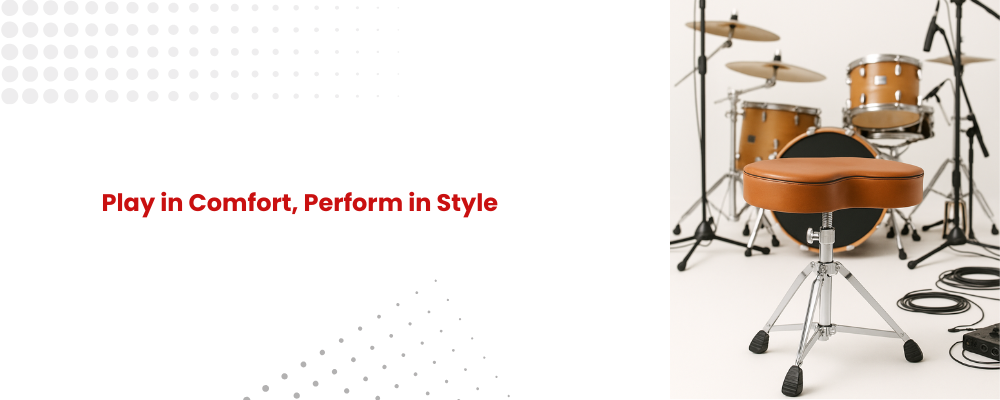
Comfortable Drum Throne
A drum throne is not only a seat only but it is your foundation. Comfort and support are needed during long recording sessions. The unstable or insufficiently cushioned throne may get you out of rhythm and balance.
Look for:
Thick Padding: High-density foam or gel cushions reduce fatigue.
Adjustable Height: Lets you find your ideal playing angle.
Stable Base: Double-braced legs for strength.
As an example, the adjustable padded drum throne has very thick cushioning, is adjustable in height and is sturdily made. It is ideal for both amateurs and professionals who want to remain comfortable in the long takes.
Quality Drumsticks for Recording
Not all sticks are the same. The recording in the studio requires consistency and control. Lighter sticks minimize the overtones, and the heavier ones provide a high and punchy tone. Several options guarantee the ability to fit any style and feel of the track.
Drum Dampening Tools
Overtones can ruin a clean recording. Dampening tools help control excess ring without killing the drum’s natural tone.
Options include:
Gel Pads: Easy to stick and remove.
O-Rings: Sit on the drumhead to tame high frequencies.
Felt Strips for Kick Drum: Give a warmer, focused sound.
These tools make post-production easier, saving you hours of editing.
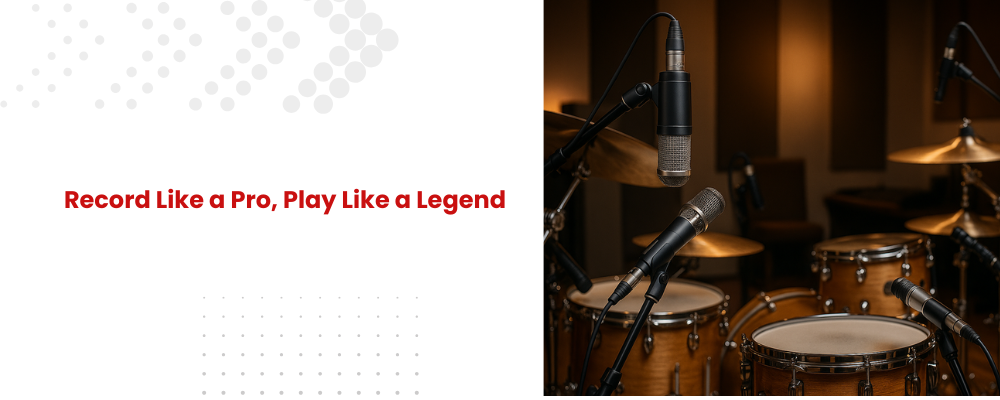
High-Quality Drum Mics
A great performance also needs a great capture. In 2025, compact condenser and dynamic mics for drums have become even better, with clearer sound and tougher design. A good drum mic kit gives you dedicated mics for the kick, toms, and snare—so every beat is captured with balance and precision.
Essential mics for a home studio:
Kick Drum Mic: Captures low-end punch.
Snare Mic: For crisp attack.
Overhead Pair: Brings the kit’s overall sound to life.
Using even a basic 4-mic setup can dramatically improve recording clarity compared to built-in interface mics.
Rug or Drum Mat
Kits can slide around during recording—especially on hard floors. A good rug or mat keeps everything in place, reduces noise transfer, and protects your floor.
Look for:
Non-Slip Backing: Prevents movement.
Thick Fabric: Absorbs vibration.
Large Enough for Full Kit: So pedals and stands stay stable.
Practice Pad for Warm-Ups
Before hitting record, warming up is essential. A good practice pad lets you loosen up quietly without disturbing your recording space setup.
Silent Surface: Minimizes noise while you warm up.
Realistic Rebound: Mimics drumhead feel.
Portable: Easy to keep nearby.
Perfect for fine-tuning your timing before a take.
Headphones for Monitoring
When tracking drums, you need headphones that block bleed and let you hear every detail.
Closed-Back Design: Isolates your ears from kit volume.
Comfortable Padding: For long sessions.
Balanced Sound Profile: Accurate lows, mids, and highs.
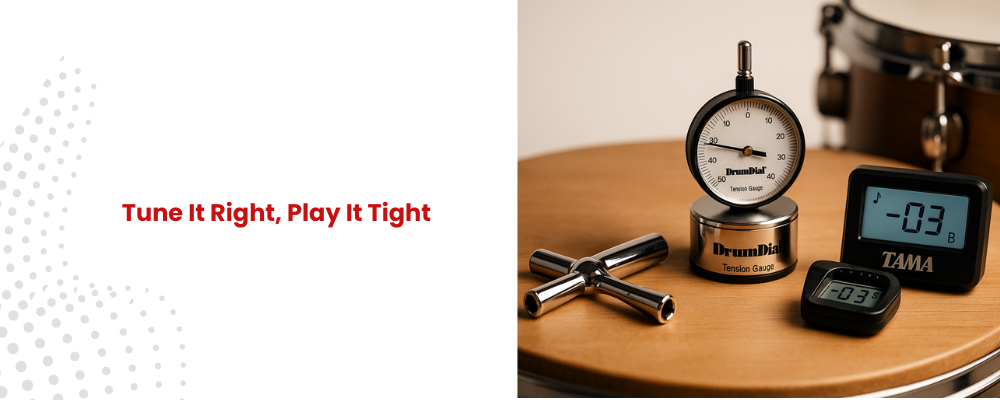
Drum Key & Tuning Tools
Drumming on an out-of-tune drum kit can be compared to singing out of tune; it simply does not work. You will need a drum key, although it is an even simpler task with modern tuning tools.
Standard Drum Key: Always keep one nearby.
Tension Gauges: Ensure even head tension.
Digital Tuners: Show pitch for precise tuning.
Cymbal Felts & Sleeves
Rattling cymbals or damaged stands can mess up a recording. Felts and sleeves protect cymbals, reduce unwanted noise, and keep them sitting right. Replace worn-out ones regularly to avoid issues mid-session.
Drum Mic Stands & Clamps
Positioning is key to a good drum sound. Stands with adjustable boom arms and compact clamps give you flexibility, especially in tight home studio spaces.
Final Thoughts
It is not only that the right accessories make recording easier, but they can also make you a better, sounder, and more inspired guy. No matter whether it is coziness of a stable drum throne, sound of quality mics, or regulation with dampening devices, every element contributes to getting the best out of your home studio environment.
Drummers in 2025 are not short of equipment to use. Begin with anything that aids in enhancing your ease and makes you sound great, and run with it. Soon, not only will your studio at home be functional, but also the place where you will be able to create your best work.
If you’re ready to upgrade your gear, explore the latest drum accessories at Drum Shop Store and see how small changes can make a big difference in your recordings.
